Lectrosonics ZS-LMB Handleiding
Lectrosonics
Niet gecategoriseerd
ZS-LMB
Bekijk gratis de handleiding van Lectrosonics ZS-LMB (20 pagina’s), behorend tot de categorie Niet gecategoriseerd. Deze gids werd als nuttig beoordeeld door 82 mensen en kreeg gemiddeld 4.6 sterren uit 41.5 reviews. Heb je een vraag over Lectrosonics ZS-LMB of wil je andere gebruikers van dit product iets vragen? Stel een vraag
Pagina 1/20

LMb
Synthesized UHF Belt-Pack Transmitter
Featuring
Digital Hybrid Wireless®
Technology
US Patent 7,225,135
INSTRUCTION MANUAL
Rio Rancho, NM, USA
www.lectrosonics.com
Fill in for your records:
Serial Number:
Purchase Date:
Quick Start Steps
1) Install good batteries and turn power on (see pages
5 and 6).
2) Set compatibility mode to match the receiver (see
page 9).
3) Connect signal source and adjust input gain for
optimum modulation level (see page 9).
4) Set StepSize and frequency to match receiver (see
page 10). Also see receiver manual for scanning
procedure.
5) Turn on the receiver and verify RF and audio sig-
nals are present (see receiver manual).

LMb
LECTROSONICS, INC.
2
Consumer Alert for US Users - FCC Order DA 10-92
Most users do not need a license to operate this wireless microphone system. Nevertheless, operating this micro-
phone system without a license is subject to certain restrictions: the system may not cause harmful interference; it
must operate at a low power level (not in excess of 50 milliwatts); and it has no protection from interference received
from any other device. Purchasers should also be aware that the FCC is currently evaluating use of wireless mi-
crophone systems, and these rules are subject to change. For more information, call the FCC at 1-888- CALL-FCC
(TTY: 1-888-TELL-FCC) or visit the FCC’s wireless microphone website at www.fcc.gov/cgb/wirelessmicrophones.
To operate wireless microphone systems at power greater than 50mW, you must qualify as a Part 74 user and be
licensed. If you qualify and wish to apply for a license go to: http://www.fcc.gov/Forms/Form601/601.html
Table of Contents
Introduction 3 ............................................................................
About Digital Hybrid Wireless 3 ..............................................
Frequency Agility.................................................................. 3
Wide-Band Deviation 3 ...........................................................
Servo Bias Input and Wiring 3 ................................................
LMb Block Diagram 4 ..............................................................
DSP-controlled Input Limiter 4 ................................................
No Pre-Emphasis/De-Emphasis 4 ..........................................
Pilot Tone Squelch ............................................................... 4
Battery Installation 5 ................................................................
Belt Clips 5 ................................................................................
Operating Instructions 6 ..........................................................
Battery Status LED Indicators 6 ..............................................
Powering On in Operating Mode 6 ..........................................
Powering On in Standby Mode 7 ............................................
Powering Off 7 ........................................................................
Navigating Menus 7 ................................................................
Locking/Unlocking Changes to Settings............................... 7
Power Menu 7 .........................................................................
Selecting Programmable Switch Functions.......................... 8
Main Window Indicators ....................................................... 8
Selecting the Compatibility (Compat) Mode 9 .........................
Connecting the Signal Source 9 .............................................
Adjusting the Input Gain 9 .......................................................
Selecting Step Size 10 ............................................................
Selecting Frequency 10 ..........................................................
Selecting Frequency Using Two Buttons 10 ............................
Helpful Features on Receivers 10 ...........................................
About Overlapping Frequency Blocks 11 ................................
Selecting Audio Polarity (Phase) 11 ........................................
Adjusting LCD Backlight 11 ....................................................
RF ON/OFF on the Menu 11 ...................................................
Selecting Battery Type ....................................................... 11
Restoring Default Settings 11 .................................................
IR (infrared) Sync 11 ...............................................................
5-Pin Input Jack Wiring 12 .......................................................
Microphone Cable Termination
for Non-Lectrosonics Microphones 13 ............................
Input Jack Wiring for Different Sources 14 ............................
Compatible Wiring for Both Servo Bias Inputs
and Earlier Transmitters: .................................................... 14
Simple Wiring for Servo Bias Inputs ONLY: ........................ 14
Microphone RF Bypassing 15 .................................................
Line Level Signals 15 ..............................................................
Wiring Diagram for MI39A Instrument Cable 15 .....................
Accessories 16 .........................................................................
Troubleshooting 17 ...................................................................
Specifications and Features 18 ...............................................
Service and Repair 19 ..............................................................
Returning Units for Repair 19 .................................................

Digital Hybrid Wireless Belt-Pack Transmitter
Rio Rancho, NM 3
Introduction
The design of the LMb transmitter delivers the ad-
vanced technology and features of Digital Hybrid Wire-
less® in a Lectrosonics belt-pack transmitter at a modest
cost. Digital Hybrid Wireless® combines a 24-bit digital
audio chain with an analog FM radio link to eliminate a
compandor and its artifacts, yet preserve the extended
operating range and noise rejection of the finest analog
wireless systems. DSP “compatibility modes” allow the
LMb to also be used with a variety of analog receivers
by emulating the compandors found in earlier Lectro-
sonics analog wireless and IFB receivers, and certain
receivers from other manufacturers (contact the factory
for details).
The housing is a rugged, machined aluminum package
with removable, stainless steel wire belt clip. The input
jack is a standard Lectrosonics 5-pin type for use with
electret lavaliere mics, dynamic mics, musical instru-
ment pickups and line level signals. The LEDs on the
top panel allow quick and accurate level settings without
having to view the receiver. The unit is powered by two
AA batteries. The antenna is a super-rugged, perma-
nently attached 1/4 wavelength design made of flexible
galvanized steel cable.
The switching power supplies in the LMb provide con-
stant voltages to the transmitter circuits from the begin-
ning to the end of battery life, with output power remain-
ing constant over the life of the battery. The input ampli-
fier uses an ultra low noise op amp for quiet operation.
Input gain is adjustable over a 44 dB range, with a DSP
-controlled dual envelope input limiter to cleanly handle
signal peaks over 30 dB above full modulation.
About Digital Hybrid Wireless
All wireless links suffer from channel noise to some
degree, and all wireless microphone systems seek to
minimize the impact of that noise on the desired signal.
Conventional analog systems use compandors for
enhanced dynamic range, at the cost of subtle artifacts
(known as “pumping” and “breathing”). Wholly digital
systems defeat the noise by sending the audio informa-
tion in digital form, at the cost of some combination of
power, bandwidth, operating range and resistance to
interference.
The Lectrosonics Digital Hybrid Wireless® system over-
comes channel noise in a dramatically new way, digitally
encoding the audio in the transmitter and decoding it
in the receiver, yet still sending the encoded informa-
tion via an analog FM wireless link. This proprietary
algorithm is not a digital implementation of an analog
compandor but a technique which can be accomplished
only in the digital domain.
Since the RF link between transmitter and receiver is
FM, channel noise will increase gradually with in-
creased operating range and weak signal conditions,
however, the Digital Hybrid Wireles system handles
this situation elegantly with rarely audible audio arti-
facts as the receiver approaches its squelch threshold.
In contrast, a purely digital system tends to drop the
audio suddenly during brief dropouts and weak signal
conditions. The Digital Hybrid Wireless® system simply
encodes the signal to use a noisy channel as efficiently
and robustly as possible, yielding audio performance
that rivals that of purely digital systems, without the
power, noise and bandwidth problems inherent in digital
transmission. Because it uses an analog FM link, Digital
Hybrid Wireless® enjoys all the benefits of conventional
FM wireless systems, such as excellent range, efficient
use of RF spectrum, and long battery life.
Frequency Agility
Frequency selection is provided in 100 kHz or 25 kHz
steps with up to 3072 channels available covering three
standard Lectrosonics 25.6 MHz blocks. Frequencies
are displayed on the LCD in MHz and in a hex code
used with earlier Lectrosonics equipment.
Wide-Band Deviation
Deviation has a direct effect on the dynamic range and
signal to noise ratio of an FM system. The greater the
deviation, the wider the dynamic range and the better
the signal to noise ratio. In the Digital Hybrid Wireless®
mode, the system operates with a maximum of +/-75
kHz of deviation. The resulting 180 kHz of occupied
bandwidth just fits inside the government specified
spectral mask of 200 kHz. In order to make this pos-
sible, an advanced, DSP-controlled limiter is used to
prevent signal peaks from exceeding the maximum
allowed bandwidth, but not cause distortion.
The result of all this is that the audio quality is outstand-
ing, rivaling a hard-wired microphone. The system deliv-
ers a very wide dynamic range, and can handle loud
signal peaks without distortion.
Servo Bias Input and Wiring
The LMb input preamp is a unique design that delivers
audible improvements over conventional transmitter
inputs. The transmitters are easier to use and much
harder to overload. It is not necessary to introduce pads
on some mics to prevent overload of the input stage,
divide the bias voltage down for some low voltage mics,
or reduce the limiter range at minimum gain settings.
Two different microphone wiring schemes are available
to simplify and standardize the configuration. Simpli-
fied 2-wire and 3-wire configurations provide several
arrangements designed for use only with servo bias
inputs to take full advantage of the preamp circuitry.
Other wiring schemes are compatible with Servo Bias
and conventional inputs.
A line level input wiring provides an extended frequency
response with an LF roll-off at 35 Hz for use with instru-
ments and line level signal sources.
Product specificaties
| Merk: | Lectrosonics |
| Categorie: | Niet gecategoriseerd |
| Model: | ZS-LMB |
Heb je hulp nodig?
Als je hulp nodig hebt met Lectrosonics ZS-LMB stel dan hieronder een vraag en andere gebruikers zullen je antwoorden
Handleiding Niet gecategoriseerd Lectrosonics
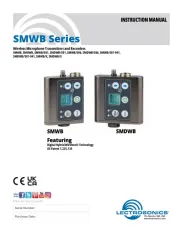
3 Maart 2025
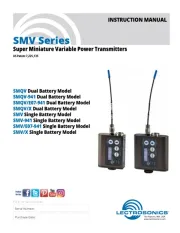
3 Maart 2025
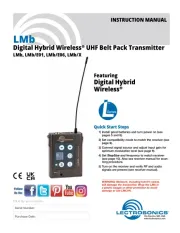
3 Maart 2025
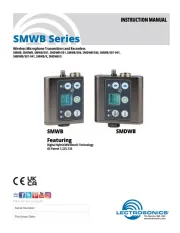
3 Maart 2025
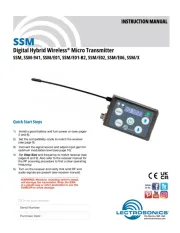
3 Maart 2025
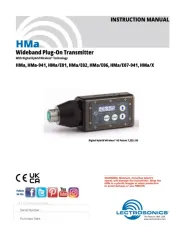
3 Maart 2025
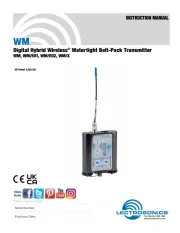
3 Maart 2025
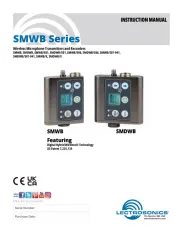
3 Maart 2025

3 Maart 2025

3 Maart 2025
Handleiding Niet gecategoriseerd
- Lava
- Eurom
- Capital Sports
- Wagner
- Prime3
- Gree
- PXN
- Salicru
- Grand Effects
- Nicai Systems
- Inkbird
- Manfrotto
- Prologue
- BERTSCHAT
- Laney
Nieuwste handleidingen voor Niet gecategoriseerd

14 September 2025

14 September 2025

13 September 2025

13 September 2025

13 September 2025

13 September 2025

13 September 2025

13 September 2025

13 September 2025

13 September 2025